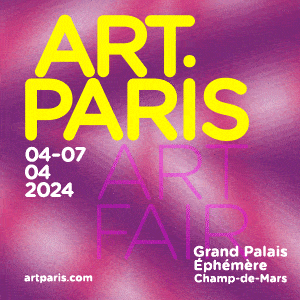Whitehot Magazine
May 2024
"The Best Art In The World"
"The Best Art In The World"
May 2024
October 2007, Carlos Motta, The Leningrad Trilogy, Winkleman Gallery, New York

By Yaelle Amir, Whitehot, New York
In the three videos and 36 framed photographs on view at Winkleman Galley in New York, Carlos Motta delineates the turbulent history of St. Petersburg and its residents with simplicity and intelligence. Representing the essence of the Communist Era, St. Petersburg contains an abundance of monuments, government buildings, and city squares from the Stalin years—physical remnants of an enforced collective identity. For this project, Motta takes his cues from the streets of the city, as he juxtaposes historical research with the outcomes of his own observations and interactions with local residents. On view at the gallery are three different perspectives of his experiences in St. Petersburg—historical, societal, and personal.
For “Leningrad, Petrograd, Petersburg (Part 1)” [2006], Motta uses as his point of departure a plate book of Leningrad locations that was published by the government in 1954. In the photographic portion of the work, he places the images of the book alongside recent pictures of the same locations. One is therefore able to compare the discrepancies that vary from subtle changes in the landscape to an entirely unrecognizable state. The other portion of this work is comprised of an ongoing projection of the same images, accompanied by a three-way discussion between Russian artist Yevgeniy Fiks, curator Elena Sorokina and Motta. Their conversation encompasses topics such as the influence of socialist values, the intersection of Russian and Latin American predicaments, and their personal experience and perception of the monuments around St. Petersburg. The merging of their different vantage points and backgrounds keeps this conversation informative and engaging.
The focus shifts to the residents of the city rather than its static structures in “Leningrad, Petrograd, Petersburg (Part 2)” [2006]. For this video, Motta interviewed numerous people that he encountered in the vicinity of two central Lenin monuments. His main inquiry concerned the personal significance and social value of having these monuments from the Communist era still positioned prominently around town. Despite the broad age range of those questioned, the reactions were mostly ambivalent—fluctuating between a respect for their historical value and a dislike for their prevalence and austere aesthetics. Many expressed the value of the monuments’ resistance to time—their ability to educate, recall, and capture the quintessence of the nation’s recent history.
The most prominent work on view is the video “Leningrad” (2006), which displays a montage of bleak black and white images of select Communist monuments and seemingly arbitrary current images from St. Petersburg. These images are interrupted by English subtitles to two renowned Russian poems that serve as a soundtrack for the video. These poems, Anna Akhmatova’s ‘Petrograd’ (1919), and Osip Mandelstam’s ‘Leningrad’ (1930), refer to the difficulties of living and writing under the Communist rule in their beloved city of St. Petersburg. This work, with its sensitive, morose tone, appears to function as a monument in and of itself—commemorating the artists and writers who were silenced or exiled during the Stalinist period.
With these three works, Motta presents St. Petersburg as a city trapped between the persistent reminders of its history and the inevitable process of moving forward. The project’s strength as a whole is Motta’s recognition that there are multiple outlooks on a collective history and experience. Each of the diverse individuals that were featured in the works contributed a unique facet to Motta’s mapping of St. Petersburg’s contemporary social topography. The result therefore is not only an intelligent meditation, but also a crucial socio-political document that resists the common disappearance of memory.
‘The Leningrad Trilogy’ is on view at Winkleman Gallery in New York from October 19 to November 17, 2007.

Yaelle Amir
Yaelle Amir is a writer in New York
yaelle_amir@hotmail.com












